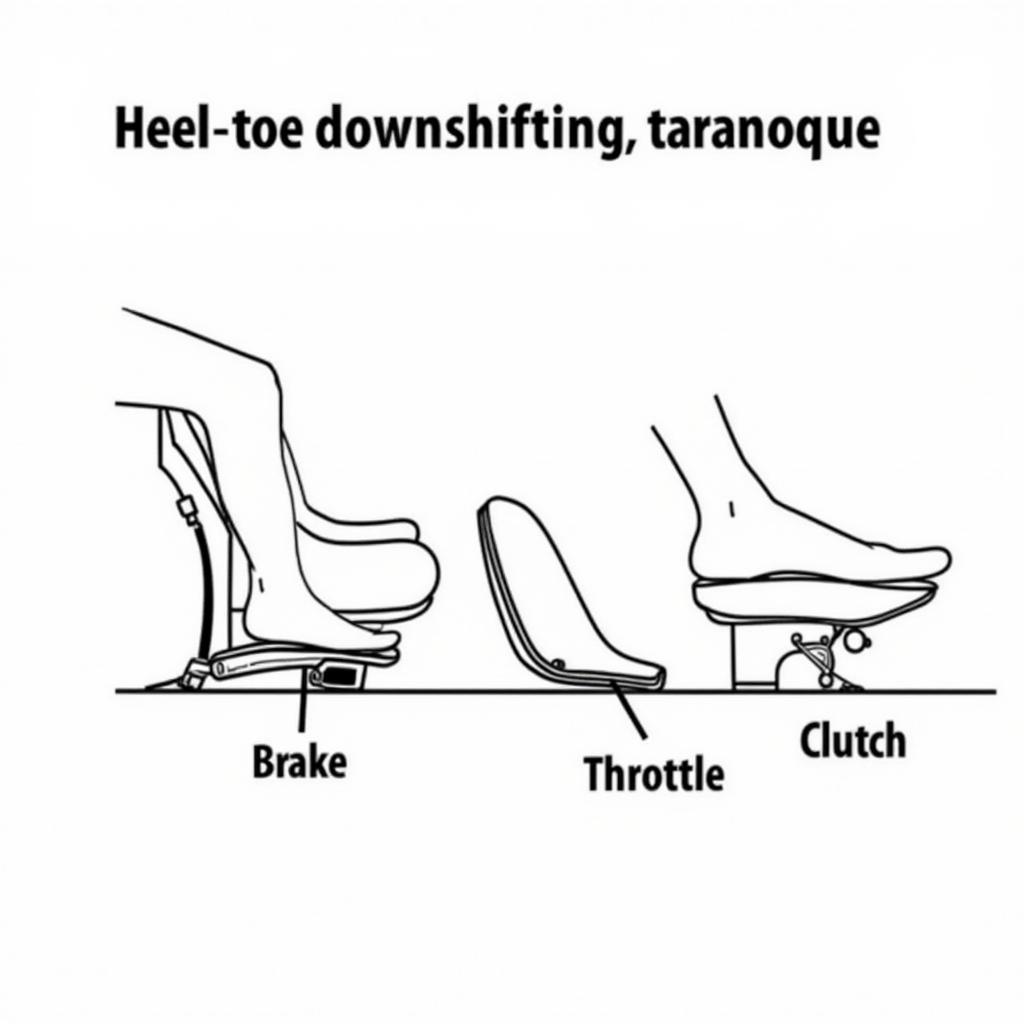Clutch Shifters offer a unique and engaging driving experience, demanding precision and skill. Understanding how they work and mastering their use can significantly enhance your performance in racing games and even translate to real-world driving scenarios. This guide will delve into the intricacies of the clutch shifter, exploring its mechanics, benefits, and providing practical tips for optimal performance.
Understanding the Mechanics of a Clutch Shifter
A clutch shifter replicates the manual transmission system found in many vehicles. Unlike automatic transmissions or paddle shifters, a clutch shifter requires the driver to actively engage and disengage the clutch to change gears smoothly. This process involves depressing the clutch pedal (or button, depending on your setup), selecting the desired gear using the shifter, and then gradually releasing the clutch while applying throttle. This coordinated action is crucial for preventing jerky shifts, stalling, and maximizing acceleration. It’s more than just pushing buttons; it’s about feeling the car and understanding the delicate dance between the clutch, gas, and gears.
After the opening, let’s talk about the sequential shifter. While not strictly a clutch shifter, the t5 sequential shifter provides a similar level of control and engagement, making it a popular choice for sim racers.
Benefits of Using a Clutch Shifter
Why choose the added complexity of a clutch shifter? The benefits are numerous, especially for those seeking a realistic and immersive racing experience.
- Enhanced Control: Clutch shifters provide a greater level of control over the vehicle, allowing for precise gear changes at optimal RPMs.
- Improved Immersion: The act of engaging the clutch and shifting gears adds a layer of realism that elevates the overall gaming experience. It connects you to the virtual car in a way that automatic shifting simply cannot.
- Faster Lap Times: With practice, mastering the clutch shifter can lead to faster lap times due to optimized gear changes and reduced power loss.
- Skill Development: Using a clutch shifter hones your driving skills, teaching you the nuances of car control and improving your overall racing technique.
Getting Started with a Clutch Shifter
Starting with a clutch shifter can be daunting, but with patience and practice, you’ll be shifting like a pro in no time. Here’s a step-by-step guide to get you started:
- Familiarize yourself with your setup: Understand the layout of your pedals and shifter.
- Start slow: Begin practicing in a controlled environment, such as a test track or open area.
- Find the bite point: The bite point is the point where the clutch begins to engage the engine. Learning to feel this point is crucial for smooth shifts.
- Practice smooth transitions: Focus on coordinating the clutch release with throttle application.
- Listen to your engine: Pay attention to the engine sound to identify the ideal shift points.
Common Clutch Shifter Issues and Troubleshooting
Even experienced drivers encounter issues with clutch shifters from time to time. Here are some common problems and how to address them:
- Stalling: This usually happens when the clutch is released too quickly. Practice finding the bite point and releasing the clutch smoothly.
- Grinding Gears: This indicates that the gears are not meshing properly. Ensure you’re fully depressing the clutch and selecting the correct gear. If you’re comparing wheels, the logitech g920 vs thrustmaster tmx comparison might be helpful in understanding different force feedback mechanisms and how they can impact shifting feel.
“Mastering the clutch shifter is like learning a musical instrument. It takes time and dedication, but the reward is a richer, more immersive driving experience,” says Alex “ShiftKing” Johnson, a professional sim racer and clutch shifter enthusiast.
Advanced Techniques and Tips
- Heel-Toe Downshifting: This advanced technique involves using your heel to blip the throttle while simultaneously braking and downshifting. It helps to match engine speed to wheel speed, resulting in smoother corner entry.
- Double-Clutching: While less common in modern racing games, double-clutching can be beneficial in some simulations. It involves depressing the clutch twice during a downshift to further synchronize engine and wheel speeds.
- Adjusting Clutch Pedal Sensitivity: Fine-tuning the sensitivity of your clutch pedal can greatly improve your control and consistency. Experiment with different settings to find what works best for you and your racing style.
“The mad catz steering wheel offers adjustable clutch pedal sensitivity, allowing drivers to fine-tune their setup for optimal performance,” adds Sarah “ClutchQueen” Lee, a renowned sim racing coach. The complexities of different transmissions like the rx7 transmission can also influence how a clutch shifter feels in a simulation.
 Advanced Clutch Shifter Techniques
Advanced Clutch Shifter Techniques
Conclusion
The clutch shifter adds a layer of depth and realism to the racing experience. While it requires practice and dedication, mastering this skill will undoubtedly elevate your performance and immersion. So, embrace the challenge, practice consistently, and unlock the full potential of your virtual racing experience with the clutch shifter.
FAQ
- What are the benefits of using a clutch shifter? Enhanced control, improved immersion, faster lap times, and skill development.
- How do I find the bite point of the clutch? Practice and feel for the point where the clutch engages the engine.
- How can I prevent stalling? Release the clutch smoothly and coordinate with throttle application.
- What is heel-toe downshifting? A technique involving blipping the throttle while braking and downshifting.
- How do I adjust clutch pedal sensitivity? Check your wheel’s settings or software for adjustment options.
- Is double-clutching necessary in modern racing games? Less common but can be beneficial in some simulations.
- How can I improve my clutch shifter skills? Practice consistently in a controlled environment.
Need further assistance? Contact us at Phone: 0902476650, Email: [email protected] or visit us at 139 Đ. Võ Văn Kiệt, Hoà Long, Bà Rịa, Bà Rịa – Vũng Tàu, Việt Nam. We have a 24/7 customer support team.





